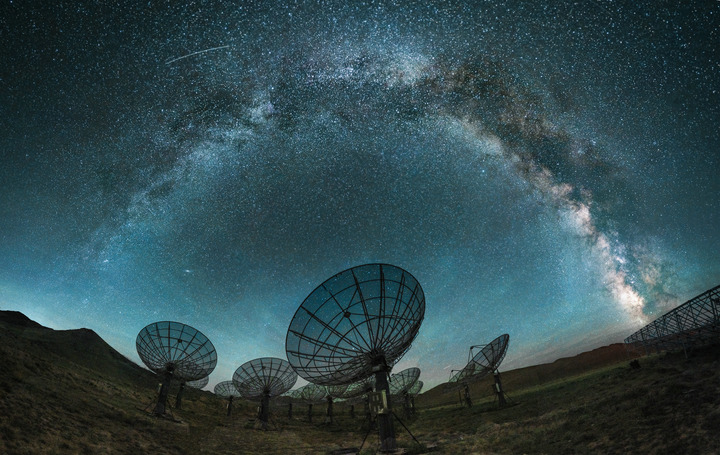China Focus: China's dark energy detector granted SKA pathfinder status
Source: Xinhua
Editor: huaxia
2024-10-22 21:57:30

This undated file photo shows an array of China's Tianlai Experiment, a project aimed to test key technologies for detecting dark energy, in the Kazak Autonomous County of Barkol in northwest China's Xinjiang Uygur Autonomous Region. (National Astronomical Observatories of the Chinese Academy of Sciences/Handout via Xinhua)
BEIJING, Oct. 22 (Xinhua) -- China's Tianlai Experiment, a scientific project aimed at detecting dark energy using a radio telescope array, has been officially granted "pathfinder" status by the Square Kilometre Array (SKA) Observatory, according to the National Astronomical Observatories (NAOC) of the Chinese Academy of Sciences.
The SKA is a next-generation giant radio telescope array that is under construction. Once completed, it will be the world's largest radio telescope array. China, South Africa, the United Kingdom, Australia and six other nations make up the project's official membership.
Facilities involved in SKA-related science and technology studies are called SKA pathfinders or SKA precursors. Several radio telescopes around the world have been certified as SKA pathfinders, said Chen Xuelei, chief scientist of the Tianlai Experiment and a researcher at the NAOC, which operates the project.
The latest discoveries from these pathfinders can provide new scientific exploration opportunities for the SKA, and their related technologies may be applied to the construction of the SKA and future radio telescopes, Chen said.
Located in the Kazak Autonomous County of Barkol in northwest China's Xinjiang Uygur Autonomous Region, the Tianlai Experiment consists of two arrays: the Tianlai cylinder array, which has three adjacent cylindrical reflectors with a total of 96 receivers, and the Tianlai dish array, which consists of 16 dishes, each six meters in diameter.
The project aims to test key technologies for detecting dark energy, which is thought to make up about 70 percent of the cosmos and drive the acceleration of its expansion.
Dark energy cannot be detected directly, but its abundance and properties can be analyzed by observing how the expansion rate of the universe changes over time. The "sound" of the Big Bang left an imprint on the matter distribution in the early universe that has now grown into large-scale structures. By studying the large-scale matter distribution, astronomers can derive these "baryon acoustic oscillations" and determine the cosmic expansion rate over time.
Tianlai, which literally means "heavenly sounds," aims to detect these acoustic oscillations. It will search for the 21-centimeter signals emitted by hydrogen atoms, with hydrogen being the most abundant element in the universe. As the universe is expanding, these 21-centimeter signals have gradually shifted to longer wavelengths in a process referred to as "redshift."
The Tianlai Experiment will cover a range of radio wavelengths -- thereby also covering redshifted signals -- to generate a map of the three-dimensional distribution of matter in the universe, Chen said.
The Tianlai research team is composed of scholars and graduate students at the NAOC and other Chinese universities, as well as experts and scholars from foreign research institutions. ■



